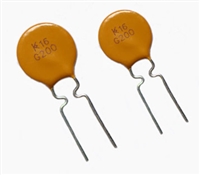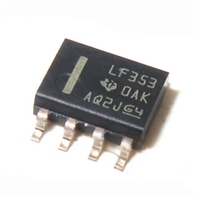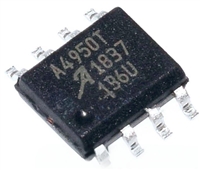temperature range. If fast temperature swings are expected, Without this capacitor the part can break into high frequency
especially with higher sensitivities, more stable capacitors be oscillation, get physically hot, stop working, or become
required, for example PPS film. In most moderate gain
applications (ie in most cases), low-cost X7R types will work
fine.
damaged.
PCB Cleanliness: All capacitive sensors should be treated
as highly sensitive circuits which can be influenced by stray
conductive leakage paths. QT devices have a basic
resolution in the femtofarad range; in this region, there is no
such thing as ‘no clean flux’. Flux absorbs moisture and
becomes conductive between solder joints, causing signal
drift and resultant false detections or temporary loss of
sensitivity. Conformal coatings can trap existing amounts of
moisture which will then become highly temperature
sensitive.
3.2 ELECTRODE WIRING
See also Section 3.4.
The wiring of the electrode and its connecting trace is
important to achieving high signal levels and low noise.
Certain design rules should be adhered to for best results:
1. Use a ground plane under the IC itself and Cs and Rs
but NOT under Re, or under or closely around the
electrode or its connecting trace. Keep ground away
from these things to reduce stray loading (which will
dramatically reduce sensitivity).
The designer should strongly consider ultrasonic cleaning as
part of the manufacturing process, and in more extreme
cases, the use of conformal coatings after cleaning and
baking.
2. Keep Cs, Rs, and Re very close to the IC.
3.3.1 SUPPLY
CURRENT
3. Make Re as large as possible. As a test, check to be
sure that an increase of Re by 50% does not appreciably
decrease sensitivity; if it does, reduce Re until the 50%
test increase has a negligible effect on sensitivity.
Measuring average power consumption is a challenging task
due to the burst nature of the device’s operation. Even a
good quality RMS DMM will have difficulty tracking the
relatively slow burst rate, and will show erratic readings.
4. Do not route the sense wire near other ‘live’ traces
containing repetitive switching signals; the trace will pick
up noise from external signals.
The easiest way to measure Idd is to put a very large
capacitor, such as 2,700µF across the power pins, and put a
220 ohm resistor from there back to the power source.
Measure the voltage across the 220 resistor with a DMM and
compute the current based on Ohm’s law. This circuit will
average out current to provide a much smoother reading.
3.3 POWER SUPPLY, PCB LAYOUT
The power supply can range from 2.5 to 5.0 volts. At 2.5 volts
current drain averages less than 10µA with Cs = 10nF,
provided a 470K Rs resistor is used (Figure 1-1). Sample Idd
curves are shown in Figure 4-3.
To reduce the current consumption the most, use high or low
gain pin settings only, the smallest value of Cs possible that
works, and a 470K resistor (Rs) across Cs (Figure 1-1). Rs
acts to help discharge capacitor Cs between bursts, and its
presence substantially reduces power consumption.
Higher values of Cs will raise current drain. Higher Cx values
can actually decrease power drain. Operation can be from
batteries, but be cautious about loads causing supply droop
(see Output Drive, Section 2.2.6) if the batteries are
unregulated.
3.3.2 ESD PROTECTION
In cases where the electrode is placed behind a dielectric
panel, the IC will be protected from direct static discharge.
However even with a panel transients can still flow into the
electrode via induction, or in extreme cases via dielectric
breakdown. Porous materials may allow a spark to tunnel
right through the material. Testing is required to reveal any
problems. The device has diode protection on its terminals
which will absorb and protect the device from most ESD
events; the usefulness of the internal clamping will depending
on the dielectric properties, panel thickness, and rise time of
the ESD transients.
As battery voltage sags with use or fluctuates slowly with
temperature, the IC will track and compensate for these
changes automatically with only minor changes in sensitivity.
If the power supply is shared with another electronic system,
care should be taken to assure that the supply is free of
digital spikes, sags, and surges which can adversely affect
the device. The IC will track slow changes in Vdd, but it can
be affected by rapid voltage steps.
if desired, the supply can be regulated using a conventional
low current regulator, for example CMOS LDO regulators that
have nanoamp quiescent currents. Care should be taken that
the regulator does not have a minimum load specification,
which almost certainly will be violated by the QT118's low
current requirement. Furthermore, some LDO regulators are
unable to provide adequate transient regulation between the
quiescent and acquire states, creating Vdd disturbances that
will interfere with the acquisition process. This can usually be
solved by adding a small extra load from Vdd to ground, such
as 10K ohms, to provide a minimum load on the regulator.
The best method available to suppress ESD and RFI is to
insert a series resistor Re in series with the electrode as
shown in Figure 1-1. The value should be the largest that
does not affect sensing performance. If Re is too high, the
gain of the sensor will decrease.
Because the charge and transfer times of the QT118 are
relatively long (~2µs), the circuit can tolerate a large value of
Re, often more than 10k ohms in most cases.
Diodes or semiconductor transient protection devices or
MOV's on the electrode trace are not advised; these devices
have extremely large amounts of nonlinear parasitic
capacitance which will swamp the capacitance of the
electrode and cause false detections and other forms of
instability. Diodes also act as RF detectors and will cause
serious RF immunity problems.
Conventional non-LDO type regulators are usually more
stable than slow, low power CMOS LDO types. Consult the
regulator manufacturer for recommendations.
For proper operation a 100nF (0.1uF) ceramic bypass
capacitor must be used between Vdd and Vss; the bypass
cap should be placed very close to the device’s power pins.
lq
7
QT118H R1.08 / 0405






 NTC热敏电阻与PTC热敏电阻的应用原理及应用范围
NTC热敏电阻与PTC热敏电阻的应用原理及应用范围

 GTO与普通晶闸管相比为什么可以自关断?为什么普通晶闸管不能呢?从GTO原理、应用范围带你了解原因及推荐型号
GTO与普通晶闸管相比为什么可以自关断?为什么普通晶闸管不能呢?从GTO原理、应用范围带你了解原因及推荐型号

 LF353数据手册解读:特性、应用、封装、引脚说明、电气参数及替换型号推荐
LF353数据手册解读:特性、应用、封装、引脚说明、电气参数及替换型号推荐

 A4950资料手册解读:特性、应用、封装、引脚功能、电气参数及代换型号
A4950资料手册解读:特性、应用、封装、引脚功能、电气参数及代换型号
